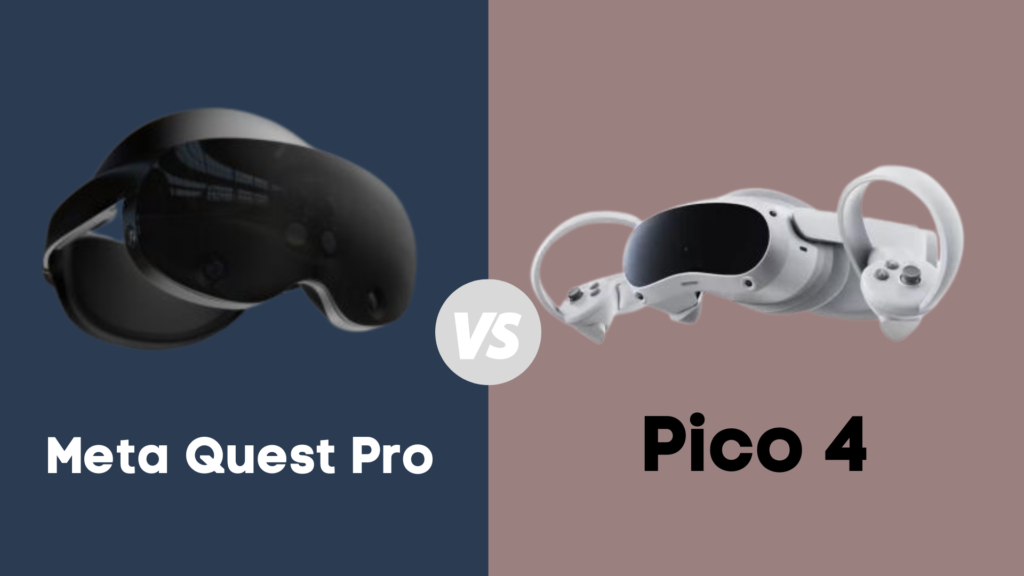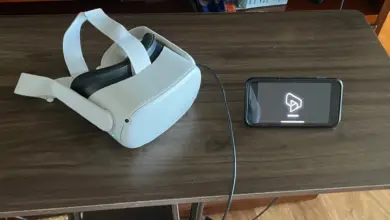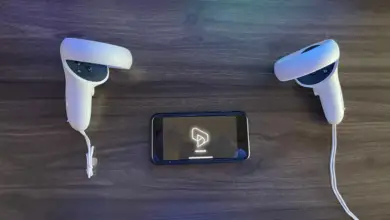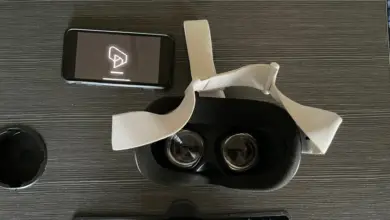Meta Quest Pro vs. Pico 4: Which one should you go for?

There are several large virtual reality headset brands out there, and arguably, the biggest of these brands is the Meta Quest. However, just because the Meta Quest is one of the biggest, does not necessarily mean it is the best. There are others that are competitive with it, such as the HTC Vive and Pico 4, the latter which is our subject today. Today, we are going to examine the Meta Quest Pro and the Pico 4, and examine the advantages and disadvantages of each device.
Meta Quest Pro vs Pico 4
Just to get this out of the way, there is no one option here that will be better than the other, at least not objectively (though few things actually are). One headset may be more appealing for one reason, while another person may find that reason irrelevant or even unappealing.
The specs
When it comes to the specifications of the two devices, the Meta Quest Pro wins hands down in virtually every area. It is simply the more powerful headset than both its predecessor, the Meta Quest 2, and the Pico 4. But how much more powerful is one than the other?
| Meta Quest Pro | Pico 4 | |
| Processor | Qualcomm Snapdragon XR2+ | Qualcomm XR2 |
| Passthrough cameras | Two front-facing cameras with color passthrough Two side-facing cameras for inside and outside tracking | Color passthrough camera |
| Resolution | 1832 x 1920 pixels per eye | 2160 x 2160 pixels per eye |
| Screen type | LCD (miniLED backlighting) | 4K LCD |
| Lenses | Pancake lenses | Pancake lenses |
| Field of view | 106° Horizontal, 96° Vertical | 105° diagonal |
| Battery length | 1-2 hours | 3 hours |
| RAM | 12GB LPDDR5 | 8GB |
| Storage | 128GB, 256GB | 128GB, 256GB |
| Eye/face tracking | Yes | No |
| Expression tracking | Yes | No |
| Operating system | Android | PICO OS 5.0 |
| Connectivity | Wi-Fi 6E, USB-C | Wi-Fi 6, 2.4GHz/5GHz dual-band, Bluetooth 5.1 |
Both headsets are quite good, but the processor used in the Meta Quest Pro is clearly more powerful than the one in the Pico 4.
As far as the operating system goes, you may find that the Meta Quest Pro – or at least the Meta brand – is better, simply due to the fact that it has a more familiar system, especially if you have previous experience with Meta or Oculus headsets.
The weight
In terms of weight, the Pico 4 is definitely the winner. The Pico 4 weighs only 586 grams (approximately 1.3 pounds), which is pretty light for as good a virtual reality headset as it is. Meanwhile, the weight of the Meta Quest Pro is 722 grams (approximately 1.6 pounds). This extra third of a pound is not a huge difference, but it certainly adds up if you intend to use the headset for a prolonged period of time.
However, due to the fact that the design of both the Meta Quest Pro and Pico 4 have been improved, such that the headset feels much more comfortable to wear.
The cost
The cost of a virtual reality headset can vary depending on the company and the technology behind it. For example, a virtual reality headset that requires you to connect to another device to use it may not be as expensive as a headset that is able to work all on its own. Of course, that is not necessarily going to be the case. For example, the PlayStation VR headset launched at $399.99, while the Meta Quest 2 (then known as the Oculus Quest 2) was $299.99, which eventually rose by $100 earlier this year, while the PSVR headset has dropped since its initial release.
Both the Pico 4 and Meta Quest Pro work on their own without requiring an additional device, though their price points are by no means similar. The Pico 4 has a pretty standard price point, slated for release at € 429 and € 499 (approximately $417 and $485 in US dollars respectively) for the 128GB and 256GB models.
Comparatively, the Meta Quest Pro is significantly more expensive, coming out at a whopping $1,499.99. If cost is the number one factor that goes into your decision and you are able to get one, the Pico 4 is an easy one to pick. If you care about using Meta products, however, it’s probably more worthwhile to go with a Meta Quest 2 instead.
I think it’s a lot more likely that the Meta Quest Pro will drop in price, assuming that it underperforms, and if a price drop does occur, it will likely be a bigger percentage drop than a potential Pico 4 price drop. Of course, since Meta Quest 2’s price increased, a price drop may not even be in the cards.
The compatibility
No matter how powerful and inexpensive a VR headset may be, there is really no point in getting it if it doesn’t really have much that it can do. One thing I always look for is the ability to use a headset on as many devices as I possibly can, whether I can do it out of the box or if I have to tweak the headset to pull it off. Thankfully, both the Meta Quest Pro and Pico 4 have ways to connect to your PC through a wireless connection between the two.
How does Meta Quest Pro compare to Meta Quest 2?
While Meta Quest 2 was no slouch by any means, the Meta Quest Pro is a very obvious upgrade. Whether it’s the RAM or the processor, the Meta Quest Pro wins. The Meta Quest 2 is more comparable to the Pico 4, which we’ve established is a weaker headset than the Meta Quest Pro. The resolution of the display on the Pro is 37 percent better than that of the Meta Quest 2 for improved contrast and sharpness. Additionally, improved technology allows you to navigate from room to room with the headset on without bumping into walls or objects.
One interesting point between Meta Quest Pro and Meta Quest 2 is weight and comfort. It is true that the Meta Quest Pro weighs more – it weighs 720 grams (approx 1.6 pounds), and the Meta Quest 2 weighs 503 grams (approx 1.1 pounds). However, certain aspects of the design were changed so that the weight is better distributed across the headset.
One criticism people had of the Meta Quest is that the headset seemed to be improperly weighted with too much at the front, and the Meta Quest Pro alleviates this problem by placing the battery at the back of the headset. Still, the extra weight can make it uncomfortable, especially if you wear it for a long time.
When it comes to games coming out for the Meta Quest Pro, it’s debatable whether many games will be made available that are designed with the Oculus Quest Pro in mind. Because the price is so much higher than Meta Quest 2, it’s likely that Meta Quest 2 will continue to be the focus for game developers. Thus, while the Meta Quest Pro is significantly more capable and polished, there is not much in the way of exclusives to incentivize you to upgrade.
How does the Pico 4 compare to the Pico Neo 3 Link?
Even if you decide that you are more interested in going with a Pico device, that doesn’t settle things. After all, it’s still important to ask, is the Pico 4 the best device in the Pico brand?
The Pico 4 is the successor to the Pico Neo 3 Link, and by most estimations, there’s pretty much no reason why you should go with the Pico Neo 3 Link. The Pico 4 has an immediately obvious improvement in visual sharpness, owing to the screen resolution (2160 x 2160 vs. 1832 x 1920). Its 105 degrees field of view also proves superior to Pico Neo 3 Link’s 98 degrees, allowing you to feel more immersed in the virtual reality world.
Perhaps the best thing about the Pico 4, however, is the fact that the Pico 4 is inexplicably lighter than its predecessor. The Pico 4’s 586 grams (approx 1.3 pounds) stacks up nicely with the Pico Neo 3 Link’s 620 grams (approx 1.4 pounds). This is primarily due to the use of pancake lenses, which are lighter than the Pico Neo 3 Link’s Fresnel lenses. The last thing you want to do is have something that is too heavy adorning your head.
The controllers have also changed, with the tracking ring being oriented more diagonally instead of being located at the top, which improves the tracking ability of the controllers. You even have superior RAM, tracking, and battery life.
With all these advancements, you’d imagine that the benefit of going with a Pico Neo 3 Link is cost, but even the Pico 4 has an advantage here, since the lowest-price model of the Pico 4 is cheaper. The Pico Neo 3 Link has 256GB of storage for € 449, while the Pico 4 has 128GB and 256GB for € 429 and € 499 respectively.
Which headset is better for gamers?
There is more than just one type of demographic that may want to use a virtual reality device; for example, virtual reality can be a lot of fun for someone who just wants to feel immersed in a virtual rollercoaster or garden. There can also be practical applications for virtual reality. However, the biggest demographic for virtual reality is easily gamers. So for them, not only do they want to know whether to get a Pico 4 or a Meta Quest Pro, but should they even upgrade in the first place?
It is true that some gamers are willing to pay out the ear for gaming hardware. I personally spent well over $1000 building a computer to satisfy my needs, and find a lot of entertainment in setting it up. However, as someone who owns a Meta Quest 2, I am unsure whether the steep price point of the Meta Quest Pro is really worth the investment, especially when there are multiple cheaper brands.
Honestly, the name of Meta Quest Pro should have tipped us off from the very beginning: Pro. It seems that, in this case, the ‘pro’ refers to a professional setting rather than, well, a pro gamer. The price point of $1,499.99 is going to put off a lot of people; I mean, there are plenty who still won’t even invest in the upper-end PS5 and Xbox Series X due to the fact that, even at their cheapest, it’s at least a $500 investment. But for triple that cost? Yeah, that, on its own, is too big a downside to pick this over another headset.
It doesn’t really help that virtual reality is already a pretty niche market, even before you take cost into account. There’s a very narrow window they have now – people interested in either immersion or games, have the money, and can stand to do virtual reality for any reasonable length of time. It’s a lot harder of a sell than buying a computer or even a video game console. Ultimately, virtual reality games need something that screams “you can’t get this anywhere else, and you need this.” Sadly, it just doesn’t have that universal hit yet.
If you decide that you are interested in getting a virtual reality headset, the Meta Quest Pro is probably not going to be the ideal pick for most people. Perhaps if they had enough money to blow on the latest and greatest headset, sure, but I suspect the people to whom that applies are few and far between.
Applications for business
A big thing about what Meta wants to do with the Meta Quest Pro is have it used while working in the Metaverse. One application is that it could be used as a replacement for both Zoom calls and in-person meetings, meant to reproduce those in-person meetings while working from home. Another workplace feature is that you could reproduce an office setting while working from home, which could be helpful if you have neither the space nor the resources to do that work.
However, there are some complications with the very idea of using it in the workplace. For one, not everyone can handle virtual reality, so that’s going to be a pretty limiting factor. Even those who can handle virtual reality may not be able to stay in it for as long as is needed. Plus, the battery life is pretty abysmal considering what they are hoping to accomplish with it. It lasts about two hours, lower than the Pico 4, Pico Neo 3 Link, and Meta Quest 2. That’s fine if you are largely stationary, but a lot of these virtual workplaces involve walking around, which is fairly limited due to battery life.
Meta is also working with certain businesses and organizations to have the Meta Quest Pro be used for a variety of other functions, including simulation training, 3D design, and more.
I think one issue with trying to make the Metaverse work, and having the Meta Quest Pro as a vehicle for that, is that the Metaverse is such a new, untested concept. Sure, it might prove to be a success, maybe even a revolution, but as it stands, many of the practical applications, and even the current execution, have me feeling at least a little skeptical.
One controversy that came up very recently was when Meta… faked feet. They released footage showing full-body avatars, but they later clarified that it was done through motion capture. Yeah, it seems pretty scuffed so far, so we’ll see how it goes.
Where are these devices available?
However, there is one big sticking point if you decide to go with the Pico 4 over the Meta Quest Pro, and that is availability. You see, rather than it being in such hot demand in America that you can’t find one, the problem Americans face is that it has yet to be made available at all. The company is currently prioritizing other countries, including the United Kingdom, Japan, Korea, Germany, and 11 other European countries.
At the moment, it is not known when, or even if, the Pico 4 will make it to the US. One point of speculation is that, because the Meta brand of headsets is already quite popular, and thus, the team behind the Pico 4 decided it may not be worth it to try to compete in that arena. Meta does not have as big of control in the Asian and European markets, so focusing on making a foothold there is a pretty smart move. Perhaps, if it is successful enough in these markets, it will one day come to the US. I’ll be sure to keep you updated on any goings on with this device.
While the Pico 4 headset is not available in America, that does not mean that the Meta Quest Pro’s availability is superior. While they do have some presence in Europe, the Meta Quest Pro will not be available in some countries where the Pico 4 is sold. For example, of the two, only the Pico 4 is available in Germany. This is not a new development for Meta, given the fact that Meta Quest 2 was banned from being sold in the country.
The reason why this is the case is because Meta is not exactly welcome in the country. Meta had a dispute with the German Federal Cartel Office, with people speculating that this was due to Meta breaching Germany’s privacy laws. Meta, then known as Oculus, received punishment for making Facebook mandatory for users of the Meta Quest 2 headset.
When are these headsets going to be released?
Both devices are slated to be released in October – Pico 4 on October 18 and Oculus Quest Pro on October 25. Ultimately, both devices have their pros and cons, with the Meta Quest Pro being more powerful in basically every way, and the Pico 4 being a much lower price and noticeably lighter.
We will be providing further coverage on both of these devices as they are released, so be sure to subscribe, hit the notification bell, and watch for more updates! Thank you for watching the video, and I hope I was able to help you figure this out.
- How to Pair Meta Quest 3 Controllers with Your Quest 3 Headset: A Quick Guide
- How to Charge Meta Quest 3: A Guide to Powering Up Your VR Experience
- How to Cast Meta Quest 3 to Samsung TV: A Step-by-Step Guide
- How To Factory Reset Your Meta Quest 3: A Step-by-Step Guide
- How to Power On and Off the Meta Quest 3





